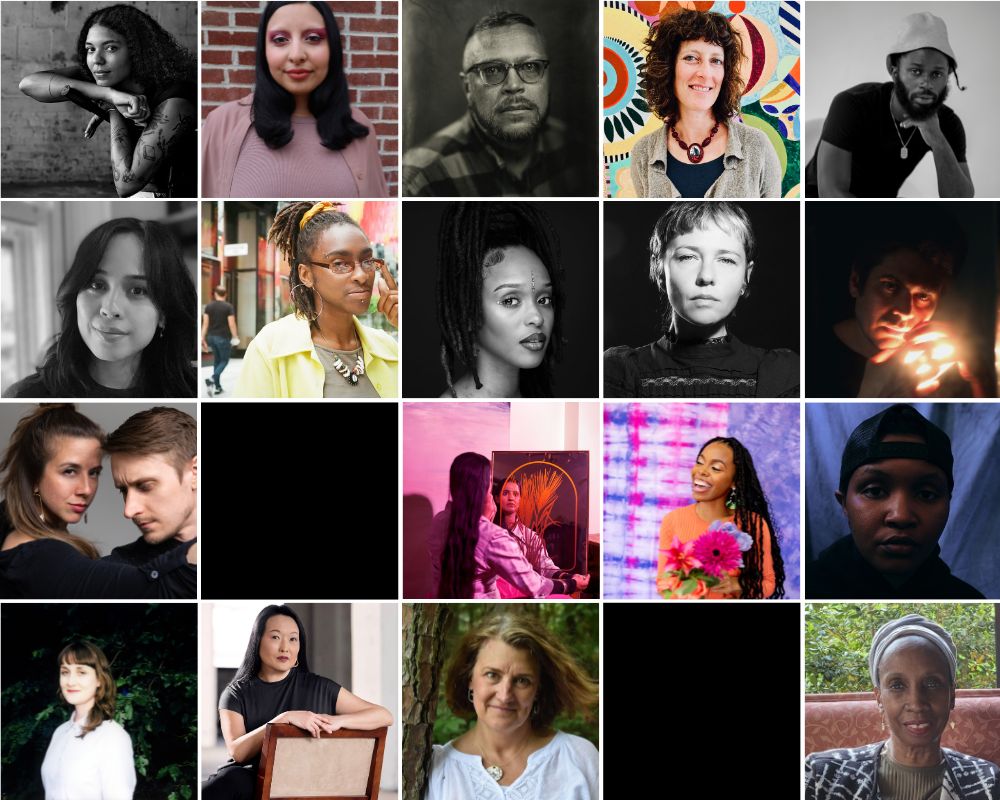This grant program has become an opportunity for artists in the Baltimore region to fund new artistic endeavors and get paid for their work.
Established in 2013 and stewarded by the Robert W. Deutsch Foundation, The Rubys Artist Grant program relaunched in the Baltimore area in March 2023. Known colloquially as “The Rubys,” this grant provides over $250,000 to support 18 new projects that the foundation announced in July.
“We are super excited about the 18 awardees,” said Alex Ebstein, the senior program manager for the Deutsch Foundation. “They represent artists at different stages of their careers, with most of them in the early phases of their projects. The funding will play a crucial role in making their projects possible. Additionally, some projects are larger, multi-year ventures, and the support will hopefully propel them to the next phase or completion.”
According to its website, The Rubys program aims to provide grants to a broad range of projects and offer professional development opportunities, network building, artist services and technical assistance. Many of this year’s projects emphasize experimentation, risk-taking and creative innovation through artificial intelligence and technology.
From live-manipulated performances using smart home devices to immersive multimedia installations, several of these artists are embracing technology in their work:
- Alejandra Nunez’s “Memory Mist” series features dynamic and meditative soundscapes that blend digital samples with live instruments to reenvision dance music.
- Ami Dang’s “Bhai Vir Singh’s Lost Melodies” weaves together multimedia art, spoken translations and recorded songs, delving into language censorship while invoking a nostalgic sentiment. It draws from “Kambdi Kalai,” a poetry collection from her great, great grandfather, and uses a mix of electronic and traditional Indian classical instruments.
- Colette Krogol and Matt Reeves’ “A&I” employs smart home tech within a dance and multimedia work that explores how we envision and treat our technologies. The completed work will be performed with the Orange Grove Dance company, which the pair leads as artistic directors.
According to a press release sent to Technical.ly, the jury also selected two projects outside of the core group of 18 grantees. It introduced them as the “Rubys MicroGrants,” which will include access to artist services. Aditya Desai and S. M. Prescott were chosen for their projects, which are a book and a collaborative audio work, respectively.
“It was really a juror request,” Ebstein said about the support offered to artists outside the core group of awardees. “The jurors were having a hard time selecting between the top projects in a historically large pool of applicants. They hoped to provide additional support to maintain momentum for the projects that weren’t selected for full funding, ensuring that they don’t lose steam between this year and next year’s grant application cycle.”
The 2023 Rubys cycle also introduced a new alumni grant program for prior grantees. Its first recipients are collaborators Angela N. Carroll and Kibibi Ajanku, who are working on a coffee table book about the Sankofa Dance Theater.
The remaining 2023 Rubys Grant recipients include:
- Abigail Lucien, “Mood Come Alive”: Lucien’s project explores sculptural poetics, creating scaled recreations of Sans-Souci Palace to envision a speculative future for the Republic of Haïti.
- Aliana Grace Bailey, “Soft Gather”: Bailey’s installation series uses fiber and color theory to create healing spaces where Black communities can reflect, rest and develop relationships.
- Cheyanne Zadia Givens, “Vacants”: This episodic series offers a poetic portrait of West Baltimore, exploring the essence of the neighborhood and perceived decay through creative storytelling.
- Diana Wharton-Sennaar, “Carry On”: Wharton-Sennaar’s new musical narrates the ups and downs of senior living facility residents at the start of the COVID-19 pandemic.
- Elena Volkova, “Faces: Ukrainian Portraits”: Volkova’s participatory art project employs historic photographic processes for a visual archive witnessing the lives of Ukrainian women and children displaced by war.
- Jalynn Harris, “Oh, Baltimore!”: This collection of poems, set in Druid Hill Park, focuses on the artist’s embodied experiences as a Baltimore native to challenge the city’s negative media representation and related narratives.
- Jimmy Joe Roche, “A Complete History of the Known Universe”: The artist’s narrative feature film gathers eccentric drifters on society’s fringes planning for the end of the world.
- Jung Yun, “WAKE”: Yun’s third novel follows three groups of passengers headed to Bermuda on a cruise soon after 9/11.
- Laura Laing, “Three: A Memoir”: This fractured exploration of coming-of-age and coming-out experiences is told through the lens of mathematical proof and structure.
- Laura Wexler, “American Love Story”: This is a docu-play created from the verbatim transcript of an infamous 1925 trial, delving into themes of race and relationships.
- Lawrence Burney, “Revisiting Ramona”: Burney’s feature-length documentary debut offers a poetic exploration of the East Baltimore neighborhood of his youth.
- Marnie Ellen Hertzler, “ETERNITY ONE”: The artist’s feature-length film imagines the possible futures for a girl and her Chesapeake Bay island-based crabbing community facing the immediate effects of the climate crisis.
- Nate Larson, “El Puente: On Juvenile Incarceration in Argentina”: Larson’s documentary project uplifts incarcerated youth in Argentina through photography, oral history interviews and collaboration.
- NIA JUNE, “What Goes Down When You Love Somebody”: This visual poem and episodic series illustrate milestones of Black love while portraying one family’s evolution through different decades against the backdrop of a Baltimore row home.
- Zara Kahan, “Come Into My Arms”: This film follows a Filipino American archivist’s quest to uncover the origins of a mysterious film while confronting repressed emotions about her abusive mother’s death and being haunted by a ghost.







